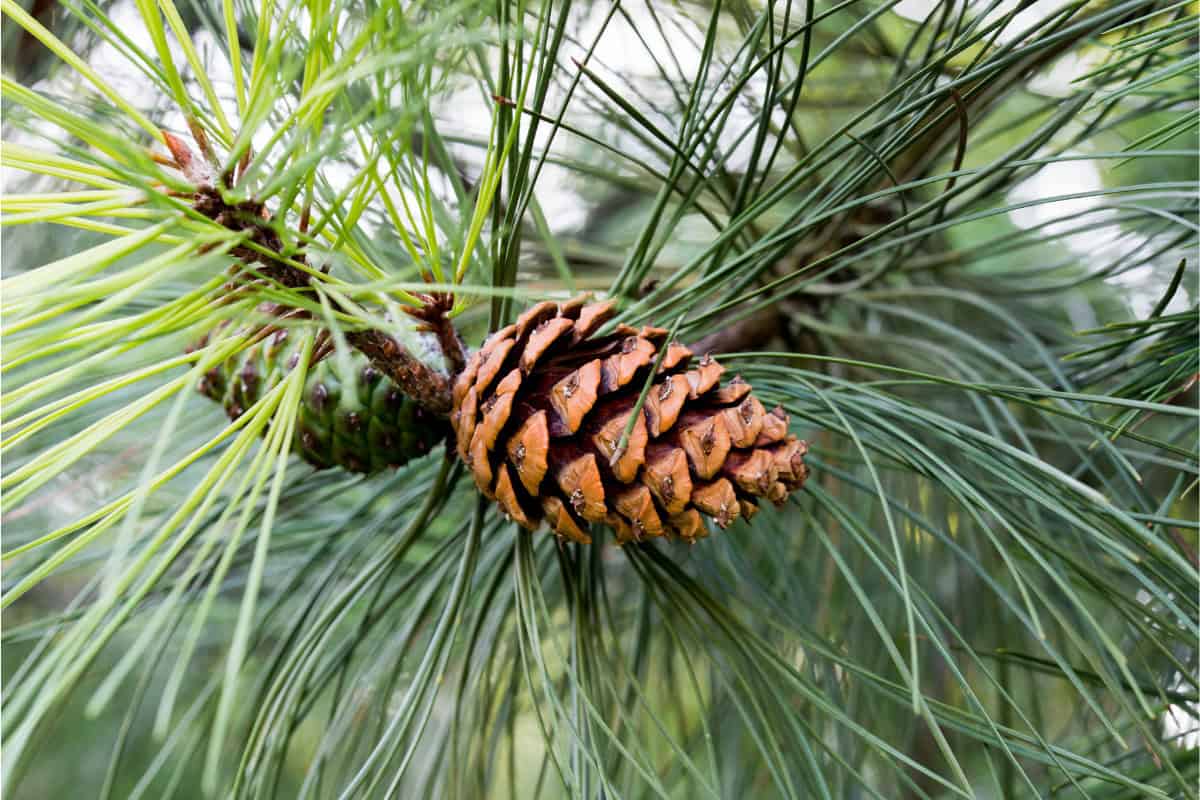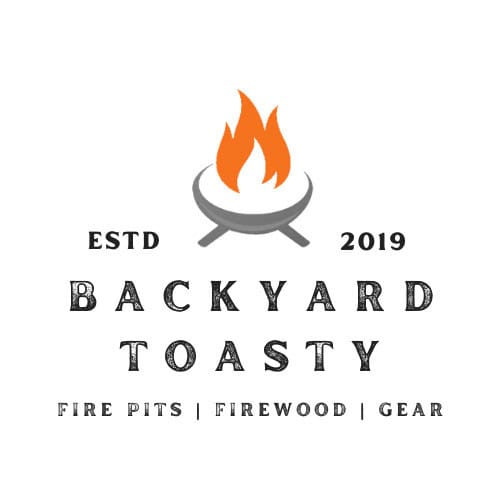
This comprehensive Ponderosa Pine firewood profile explores the vanilla-scented giant of western forests, delivering 15,200-17,500 BTUs per cord with easy processing and delightful aromatic qualities.
Known for its distinctive butterscotch bark and pleasant burning characteristics, Ponderosa Pine offers accessible firewood performance that makes it a popular choice throughout its extensive range.
- Quick Reference Stats
- Overview & Identification: Ponderosa Pine Firewood Profile
- Geographic Distribution
- Burning Characteristics
- Sensory Experience
- Processing & Preparation
- Specialized Uses
- Pros & Cons
- Best Practices & Tips
- Bottom Line
- 🌲 Ponderosa Pine Quick Reference Table 🔥
- Related Resources: Ponderosa Pine Firewood Profile
Quick Reference Stats
- Wood Type: Softwood (evergreen conifer)
- BTU Rating: 15,200-17,500 BTUs per cord
- Ease of Splitting: Very Easy (4.5/5 scale)
- Seasoning Time: 6-9 months
- Smoke Production: Moderate
- Spark/Pop Factor: High
- Scent Profile: Distinctive – Vanilla/butterscotch aroma, especially from bark
Overview & Identification: Ponderosa Pine Firewood Profile
Ponderosa Pine represents the accessible softwood option, offering moderate heat output with exceptionally easy processing and memorable aromatic qualities.
This widespread western conifer provides reliable performance for those seeking readily available firewood without the challenges of denser species.
The distinctive vanilla-scented bark and long needles in bundles of three make identification unmistakable for this western staple.
Common Names: Ponderosa Pine, Yellow Pine, Bull Pine, Western Yellow Pine
Scientific Name: Pinus ponderosa (family Pinaceae)
Tree Characteristics: Large evergreen conifer reaching 60-125 feet with straight trunk and open, irregular crown. Features long needles (5-10 inches) in bundles of 3, and distinctive orange-brown puzzle-piece bark that smells like vanilla or butterscotch.
Geographic Distribution
Where You’ll Find It: Western North America from British Columbia to Mexico, most abundant in dry mountain regions
Availability: Excellent throughout western states – abundant from forest thinning and fire prevention
Growing Conditions: Thrives in dry mountain environments from 3,000-9,000 feet elevation. Fire-adapted species.
Burning Characteristics
Heat Output & Performance
- BTU Content: Moderate heat production typical of pine species
- Burn Duration: Relatively quick burning requiring frequent loading
- Coaling Properties: Forms light coals that don’t persist long
- Flame Characteristics: Burns with bright, active flames providing good light
Ignition & Fire Management
- Ease of Lighting: Ignites very easily – excellent for fire starting
- Best Fire Stage: Best for kindling and building fires quickly
- Burn Rate: Fast consumption requires attentive management
- Heat Consistency: Quick heat delivery with less sustained output
Sensory Experience
Smoke Profile
- Smoke Volume: Moderate smoke production even when seasoned
- Smoke Color: Can produce dark smoke if not burning hot
- Smoke Flavor: Resinous pine flavor – limited cooking applications
- Creosote Production: High – requires diligent chimney cleaning
Sound & Visual
- Crackling/Popping: High – creates active, noisy fires
- Sparking Tendency: Significant sparking demands constant screening
- Flame Appearance: Bright, dancing flames with lively display
Aroma
- Burning Scent: Pleasant pine fragrance with vanilla undertones
- Pleasant Factor: Generally enjoyed but can be strong
- Intensity: Strong aromatic presence, especially initially
Processing & Preparation
Splitting Characteristics
- Ease of Splitting: Very easy – one of the easiest woods to split
- Grain Pattern: Straight grain with minimal resistance
- Tools Needed: Light maul or even hatchet sufficient
- Best Splitting Conditions: Splits well in any condition
Seasoning Requirements
- Drying Time: 6-9 months – one of the faster-drying woods
- Moisture Content: Lower starting moisture than many species
- Seasoning Tips: Splits dry quickly with basic stacking
- Storage Considerations: Benefits from weather protection
Processing Notes
- Chainsaw Considerations: Cuts easily but heavy pitch buildup
- Bark Characteristics: Thick plated bark with distinctive scent
- Handling: Lightweight – easy to move and stack
- Safety Considerations: Resin makes everything sticky
Specialized Uses
Common Applications
- Kindling King: Exceptional for kindling and fire starting
- Campfire Favorite: Popular for recreational fires
- Shoulder Season: Good for mild heating needs
- Aromatherapy: Bark used for potpourri and crafts
Regional Traditions
- Fire Prevention: Thinning provides abundant supply
- Outdoor Cooking: Limited use – mostly for ambiance
- Craft Applications: Fatwood sections prized for fire starting
- Cultural Uses: Traditional material for various purposes
Pros & Cons
Advantages
- Extremely easy to split and process
- Quick seasoning time
- Excellent for starting fires
- Readily available in western regions
- Lightweight and easy to handle
- Pleasant vanilla/pine aroma
- Burns bright with cheerful flames
- Very affordable where abundant
- Good for learning fire management
- Sustainable from forest thinning
Disadvantages
- Lower heat output than many options
- Burns very quickly requiring constant feeding
- High sparking creates fire hazard
- Produces significant creosote
- Not suitable for overnight burns
- Heavy pitch makes processing messy
- Limited to western regions
- More smoke than denser woods
- Not ideal as primary heating fuel
Best Practices & Tips
Safe Burning Practices
- Mandatory Screening: Never burn without spark protection
- Hot Fires: Burn hot to reduce creosote buildup
- Chimney Maintenance: Clean chimney frequently
- Outdoor Caution: Ideal for contained outdoor fires
Processing Strategy
- Pitch Management: Process on expendable surfaces
- Tool Cleaning: Keep solvent handy for pitch removal
- Size Optimization: Split small for quick, hot burns
- Bark Utilization: Save aromatic bark for kindling
Usage Optimization
- Mixing Required: Blend with denser woods for better performance
- Daytime Burns: Best when actively tending fire
- Starter Wood: Excel as kindling with other species
- Seasonal Timing: Perfect for fall and spring
Bottom Line
Ponderosa Pine serves as the entry-level firewood that excels in ease of use while requiring understanding of its limitations.
Its combination of easy processing, pleasant aroma, and wide availability makes it valuable for specific applications, though it shouldn’t be relied upon as a primary heating fuel without supplementation from denser woods.
Best For: Fire starting, kindling, campfires, aromatic ambiance, beginners, and supplemental heating
Skip If: You need primary heating fuel, overnight burns, minimal maintenance, or low creosote production
For a complete breakdown of Ponderosa Pine’s utility characteristics and safety considerations, our detailed quick reference table below provides all the technical specifications you need.
Related Resources: Ponderosa Pine Firewood Profile
Last updated: 8/15/2025


